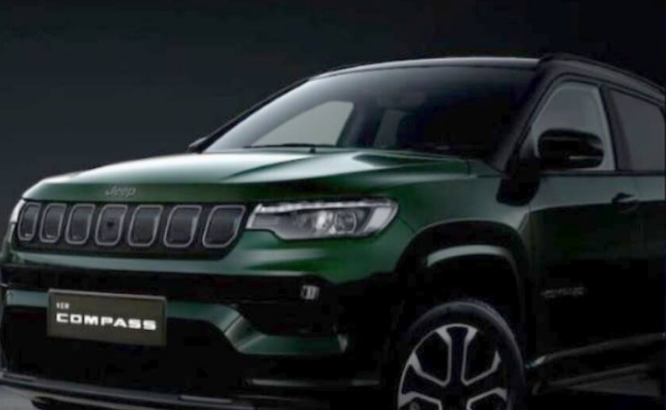Ahead of its unveiling on January 7, the Jeep Compass facelift has been spied with none camouflage. It’s been seen within the new green shade which will come along side the facelift. These new spy shots give us a thought of all the changes we will expect inside and out.
The facelifted Jeep Compass will sport new LED headlamps and LED DRLs, a totally new front bumper, a refreshed slat grille, and therefore the new colour. The alloy wheel design remains an equivalent . No major cosmetic changes are seen within the rear profile.
The cabin has received an entire makeover. you’ll spot the free-standing 10.1-inch touchscreen infotainment unit with FCA’s latest Uconnect 5 system, wireless Android Auto and Apple CarPlay, new climate controls, a dual-tone tan leather dashboard theme, sleeker AC vents, and a replacement wheel . While the international-spec facelift gets a totally digital instrument cluster, the India model seems to miss out thereon . You get the prevailing semi-digital twin-pod analogue panel and a 7-inch colour screen.
The facelift is additionally expected to urge wireless charging support, ventilated seats, and a 360-degree camera. Other existing features like dual-zone climate control, panoramic sunroof, six airbags, ESC, electrically adjustable driver seat, and control are going to be retained.
The Compass Facelift is probably going to continue with an equivalent petrol and diesel engines. the present model gets a 1.4-litre turbo-petrol engine and a 2.0-litre diesel . The turbo-petrol produces 162PS and 250Nm while the diesel makes 170PS and 350Nm. it’ll also continue with an equivalent set of transmissions. The 6-speed manual will come as standard with both engines. The turbo-petrol and diesel will further offer the choice of a 7-speed DCT and a 9-speed AT, respectively.
Currently, the Jeep Compass retails from Rs 16.49 lakh to Rs 27.60 lakh (ex-showroom Delhi), which also includes the Trailhawk variants. Expect Jeep to charge a premium over the present prices. it’ll still compete with the MG Hector, Tata Harrier, Hyundai Tucson and Mahindra XUV500.
